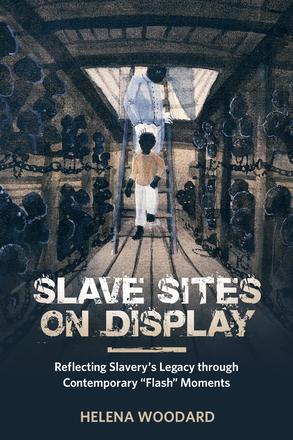
Slave Sites on Display
Reflecting Slavery's Legacy through Contemporary "Flash" Moments
How complex connections involved in memorializing slavery create events that wed the past to the present
Description
At Senegal’s House of Slaves, Barack Obama’s presidential visit renewed debate about authenticity, belonging, and the myth of return—not only for the president, but also for the slave fort itself. At the African Burial Ground National Monument in New York, up to ten thousand slave decedents lie buried beneath the area around Wall Street, which some of them helped to build and maintain. Their likely descendants, whose activism produced the monument located at that burial site, now occupy its margins. The Bench by the Road slave memorial at Sullivan’s Isle near Charleston reflects the region’s centrality in slavery’s legacy, a legacy made explicit when the murder of nine black parishioners by a white supremacist led to the removal of the Confederate flag from the state’s capitol grounds. Helena Woodard considers whether the historical slave sites that have been commemorated in the global community represent significant progress for the black community or are simply an unforgiving mirror of the present.
In Slave Sites on Display: Reflecting Slavery’s Legacy through Contemporary “Flash” Moments, Woodard examines how select modern-day slave sites can be understood as contemporary “flash” moments: specific circumstances and/or seminal events that bind the past to the present. Woodard exposes the complex connections between these slave sites and the impact of race and slavery today. Though they differ from one another, all of these sites are displayed as slave memorials or monuments and function as high-profile tourist attractions. They interpret a story about the history of Atlantic slavery relative to the lived experiences of the diaspora slave descendants that organize and visit the sites.
Reviews
"Overall, Woodard has tackled a large and thorny issue and has crafted a book sure to appeal to scholars from a wide range of fields. A thoughtful and thought-provoking book, Slave Sites on Display is a welcome addition to the discussion of memory, race, and the many ways we seek to understand a perhaps irretrievable past. "
- Court Carney, The Journal of Southern History, Volume LXXXVII, No. 1, February 2021
"Slave Sites on Display is a valuable entry into the discussion over how sites of slavery should be treated and interpreted. Woodard provides critical and invaluable insight and understanding. "
- Shawn Halifax, The Public Historian, Vol. 43, May 2021, No. 2
"Slave Sites on Display is a well-written, well-organized book that engages with the literature on history, memory, and slavery. Helena Woodard’s use of the ‘flash moment’ concept to explore the relationship between slavery and memory is a novel contribution to the existing scholarly literature. "
- Audra A. Diptée, associate professor of history at Carleton University, managing director of the History Watch Project, and author of From Africa to Jamaica: The Making of an Atlantic Slave Society, 1775–1807
"Woodard’s nuanced consideration of how slave memorials work and culturally and what it means for us to engage with them thoughtfully provides a framework for exploration of the heart of America’s darkness that will benefit generations of future readers and scholars as well."
- William R. Nash, African American Review